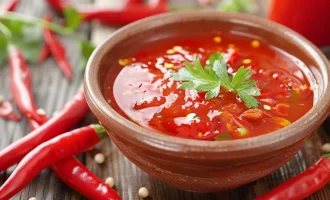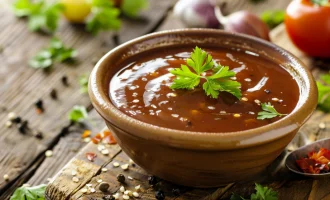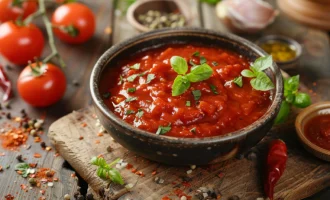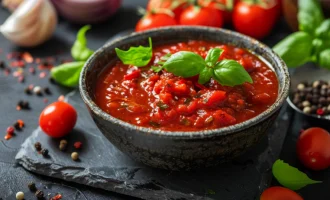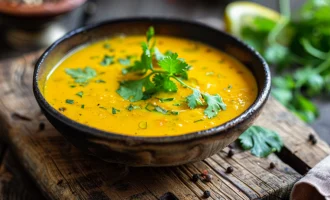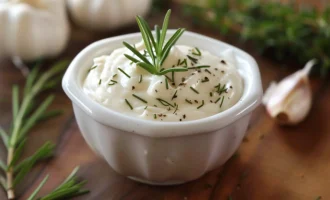Pesto, specifically Pesto alla Genovese, is a vibrant green sauce originating from Genoa in the Liguria region of Italy. The name “pesto” derives from the Italian word “pestare,” which means to pound or crush, referring to the traditional method of making the sauce using a mortar and pestle. This aromatic sauce is made from fresh basil, garlic, pine nuts, Parmesan or Pecorino cheese, olive oil, and salt. Its creation dates back to the Roman times, with the modern version becoming popularized in the 19th century. Pesto is commonly served with pasta, such as trofie or linguine, but it’s also delicious with bread, pizza, salads, and as a marinade for meats and vegetables.
- Fresh basil leaves 50 g
- Garlic 2 cloves
- Pine nuts 30 g
- Grated Parmesan cheese: 50 g
- Grated Pecorino cheese 20 g
- Extra virgin olive oil 120 ml
- Salt to taste
- Wash the basil leaves in cold water and gently pat them dry with a paper towel. This step is crucial to preserve the vibrant green color and fresh flavor of the basil.
- Traditionally, a mortar and pestle are used to crush the garlic, pine nuts, and basil leaves together with a pinch of salt, creating a paste. However, a food processor can be used for convenience. Pulse the garlic, pine nuts, and basil leaves until coarsely chopped.
- Add the grated Parmesan and Pecorino cheese to the mixture and blend again until the mixture becomes smooth.
- While the processor is running, gradually add the olive oil in a steady stream until the sauce reaches your desired consistency. The oil not only preserves the sauce but also gives it a rich, creamy texture.
- Taste the pesto and adjust the seasoning with salt as needed.
Storage Tips
Pesto can be stored in an airtight container in the refrigerator for up to a week. Pouring a thin layer of olive oil on top of the pesto before sealing the container can help preserve its vibrant green color. For longer storage, pesto can be frozen in ice cube trays and then transferred to a freezer bag for use up to 6 months.
Useful Properties of the Main Ingredient
Basil, the main ingredient in pesto, is rich in vitamins A, K, and C, calcium, iron, and antioxidants. It has anti-inflammatory properties and can contribute to cardiovascular health.
Interesting Facts
- The ancient Romans ate a dish called “Moretum,” which was made by crushing garlic, salt, cheese, herbs, olive oil, and vinegar together, similar to the modern pesto.
- Pesto is a versatile sauce that varies by region in Italy; for example, Sicilian pesto includes tomatoes and almonds instead of pine nuts.
- The key to a bright green pesto is using fresh basil leaves and not overprocessing the sauce, as heat from too much friction can darken the basil.
This classic pesto sauce recipe offers a taste of Italy that’s easy to make at home, perfect for adding a burst of flavor to a wide variety of dishes.


